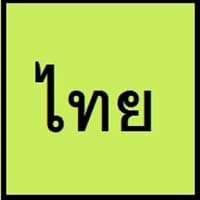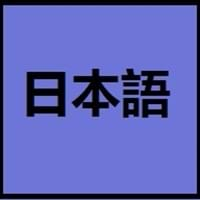Thai vs Japanese
National Language
Thailand
Japan
Second Language
Not spoken in any of the countries
Not spoken in any of the countries
Speaking Continents
Asia
Asia, Pacific
Minority Language
Burma, Cambodia, Laos
Palau
Regulated By
Royal Society of Thailand (ราชบัณฑิตยสภา)
Agency for Cultural Affairs (文化庁) at the Ministry of Education
Interesting Facts
- Thai is tonal language and also it is very repetitive and exaggerative language.
- You should learn thai language with native speakers and not with books or recorders, since speaking and writing in thai are not the same.
- In Japanese Language, there are 4 different ways to address people: kun, chan, san and sama.
- There are many words in Japanese language which end with vowel letter, which determines the structure and rhythm of Japanese.
Similar To
Lao Language
Korean Language
Derived From
Khmer Language
Not Available
Alphabets in
Thai-Alphabets.jpg#200
Japanese-Alphabets.jpg#200
Writing Direction
Left-To-Right, Horizontal
Left-To-Right, Horizontal, Top-To-Bottom
Hello
สวัสดี (S̄wạs̄dī)
こんにちは (Kon'nichiwa)
Thank You
ขอบคุณ (K̄hxbkhuṇ)
ありがとう (Arigatō)
How Are You?
คุณเป็นอย่างไร? (Khuṇ pĕn xỳāngrị?)
お元気ですか (O genki desu ka?)
Good Night
นอนหลับฝันดี (Nxn h̄lạb f̄ạn dī)
おやすみなさい (Oyasuminasai)
Good Evening
สวัสดี (S̄wạs̄dī)
こんばんは (Konbanwa)
Good Afternoon
สวัสดีตอนบ่าย (S̄wạs̄dī txn b̀āy)
こんにちは (Konnichiwa!)
Good Morning
อรุณสวัสดิ์ (Xruṇ s̄wạs̄di̒)
おはよう (Ohayō)
Please
โปรด (Pord)
お願いします (Onegaishimasu)
Sorry
ขอโทษ (K̄hxthos̄ʹ)
ごめんなさい (Gomen'nasai)
Bye
ลาก่อน (Lā k̀xn)
さようなら (Sayōnara)
I Love You
ผมรักคุณ (P̄hm rạk khuṇ)
愛しています (Aishiteimasu)
Excuse Me
ขอโทษ (K̄hxthos̄ʹ)
すみません (Sumimasen)
Where They Speak
Isan
Kagawa
Dialect 2
Northern Thai
Hakata
Where They Speak
Northern Thailand
Fukuoka
How Many People Speak
Not Available
Dialect 3
Southern Thai
Kansai
Where They Speak
Kedah, Kelantan, Southern Thailand, Tanintharyi
kansai
How Many People Speak
Not Available
Second Language Speakers
Not Available
Alternative Names
Siamese, Standard Thai, Thaiklang
Not Available
French Name
thaï
japonais
German Name
Thailändisch
Japanisch
Pronunciation
[pʰāːsǎː tʰāj]
/nihoɴɡo/: [nihõŋɡo], [nihõŋŋo]
Ethnicity
Central Thai and Thai Chinese
Japanese (Yamato)
Language Family
Tai-Kadai Family
Japonic Family
Subgroup
Tai
Not Available
Branch
Not Available
Not Available
Early Forms
Old Thai
Old Japanese, Early Middle Japanese, Late Middle Japanese and Early Modern Japanese
Standard Forms
Thai
Japanese
Signed Forms
Thai Sign Language
Signed Japanese
Scope
Individual
Individual
ISO 639 6
Not Available
Not Available
Glottocode
thai1261
nucl1643
Linguasphere
47-AAA-b
45-CAA-a
Language Type
Living
Living
Language Linguistic Typology
Subject-Verb-Object
Subject-Object-Verb
Language Morphological Typology
Analytic, Isolating
Agglutinative, Synthetic
Thai and Japanese Language History
Comparison of Thai vs Japanese language history gives us differences between origin of Thai and Japanese language. History of Thai language states that this language originated in 1283 CE whereas history of Japanese language states that this language originated in 1185. Family of the language also forms a part of history of that language. More on language families of these languages can be found out on Thai and Japanese Language History.
Thai and Japanese Greetings
People around the world use different languages to interact with each other. Even if we cannot communicate fluently in any language, it will always be beneficial to know about some of the common greetings or phrases from that language. This is where Thai and Japanese greetings helps you to understand basic phrases in Thai and Japanese language. Thai word for "Hello" is สวัสดี (S̄wạs̄dī) or Japanese word for "Thank You" is ありがとう (Arigatō). Find more of such common Thai Greetings and Japanese Greetings. These greetings will help you to be more confident when conversing with natives that speak these languages.
Thai vs Japanese Difficulty
The Thai vs Japanese difficulty level basically depends on the number of Thai Alphabets and Japanese Alphabets. Also the number of vowels and consonants in the language plays an important role in deciding the difficulty level of that language. The important points to be considered when we compare Thai and Japanese are the origin, speaking countries, language family, different greetings, speaking population of these languages. Want to know in Thai and Japanese, which language is harder to learn? Time required to learn Thai is 44 weeks while to learn Japanese time required is 88 weeks.





